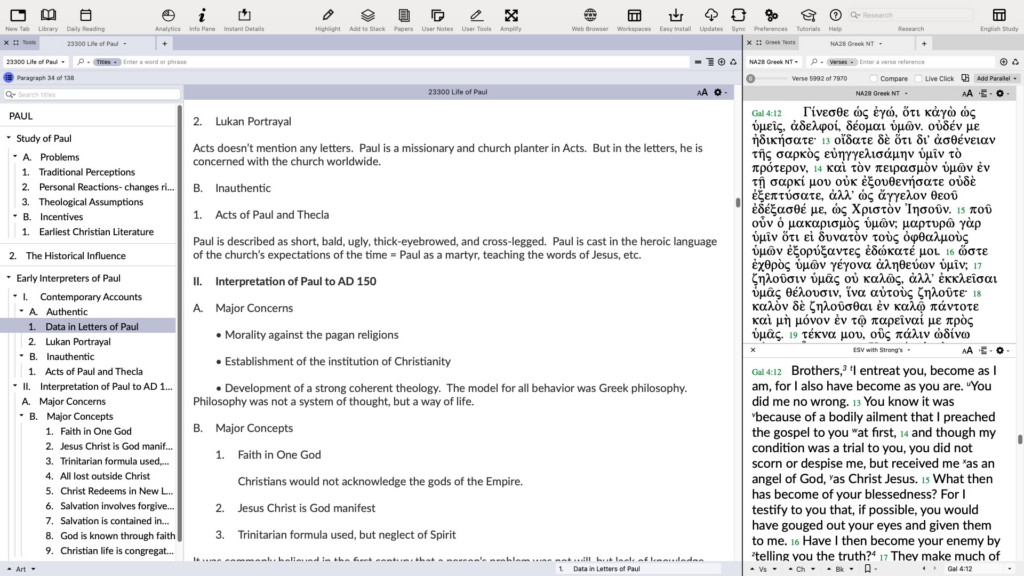Note: this post is a revision of an earlier installment in the series, “7 Strategies for Students Who Use Accordance,” which I am in the process of revising. The newly-revised series incorporates different numbering and brings these valuable posts up to date with the newest advances in Accordance Bible Software.
When I began my M.Div classes in the early ’90s, laptops were a luxury most of us could not afford, and powerful Bible software like Accordance was non-existent (Accordance 1.0 was released in 1994). In class I took my notes by hand with pencil and paper. Then, I went home and transcribed them onto my desktop computer in Microsoft Word. Although this repetitive method was actually a good way to reinforce what we had covered in class, it was also very time consuming.

Above: Class notes in an Accordance User Tool
If I were a student taking classes today, I would simply take my notes in Accordance itself! There are two primary and different methods for taking notes in Accordance: User Tools or Papers. But first, let’s look at the advantages to taking notes directly in Accordance itself.
What are the advantages of taking class notes in Accordance?
- Accordance user-created documents are fully editable on the fly. With each new session, open your class notes and pick up where you left off in the previous class.
- Since you’re already in Accordance, take advantage of quick access for copying content from the Bible, whether in Greek, Hebrew or in a translation.
- All Scripture references can be hyperlinked, and you can also create links to other content in Accordance, including textbooks in your Accordance Library.
- A class notes User Tool is fully searchable according to the kind of content it contains: Scripture references, Greek, Hebrew, English, etc.
- Your class notes are integrated into Accordance and can be used to Amplify to or from other content in Accordance.
- You can create a searchable Group of all your class notes or combine them with other titles in your personal Accordance Library for comprehensive searches in Accordance’s Research feature.
- If your professor creates a chart or diagram on the whiteboard, take a photo of it with your smartphone and drop it into your class notes in Accordance.
- In User Tools you can create a Table of Contents around the structure of your notes for a running outline. The same can be done in a Paper document by collapsing content to display just headings
- Share your Accordance class notes with your classmates who also use Accordance.
- Sync your User Tools or Papers documents over to your phone or tablet to take it with you on the go for those unexpected moments where you may be able to get some extra study into your day!

Above: Class notes in an Accordance Papers document.
Now, which should you use? Papers or User Tools? Well, it’s really up to you. Create User Tools for content that you want to be included in Accordance’s Research (searching across multiple titles or even all content). If you’re creating a highly-structured document, especially documents where footnotes are needed or if you need to print out your notes.
Really, the sky’s the limit for the many different ways your class notes can be used in Accordance. I still have all my class notes in ancient MS Word formats, but they’re all isolated as separate files. Maybe one day I’ll take the time to convert all my class notes into Accordance User Tools or Papers documents; but if you’re a student now, consider using Accordance as your ultimate note-taking tool for classes revolving around biblical studies, theology, and church history.
Want to know more about creating content in Accordance? Here are some helpful webinar recordings:
Bonus tip: If your class notes in Accordance include comments made by your professor over a specific topic, click the plus (+) sign to the right of the verse in a Text Search Window and add your professor’s comments in your Bible User Notes.
Other posts in this series:
#1 Save Specialized Workspaces

